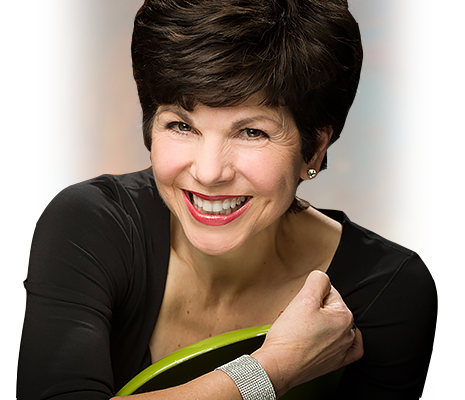 Learn the art of the short story.
Learn the art of the short story.
Question: “So, tell me about yourself…”
Answer: “Well, when I was 16 years old… (25 minutes later)
Within the last two weeks, I have sat through (endured, really), more than four chronological life stories. You know, where the person sharing tells you every detail of every significant event at every age from their past all the way up to the present day. It is excruciating – almost as bad as sitting through a boring 50-page PowerPoint presentation. (Well, maybe not that bad.)
It’s just too much detail.
I know this to be true because I have been on both sides of the table: both as the offender and the offended. I remember destroying potential job opportunities that I might have enjoyed several years ago at LEGO and Yankee Candle Co. because I chose to spend most of the interview time telling my life story, rather than building rapport, learning more about the company, the hiring manager and his needs and positioning myself strategically. I blew it…but I’ve learned from the experience.
So here’s some helpful advice that I can offer you to help save you from yourself during important meetings – whether they are networking meetings, job interviews or formal presentations.
How to strategically answer the questions “Tell me about yourself…” “What do you do for a living?” and”Walk me through your resume…“ in a way that can position you for greater opportunity.
When you hear either one of these questions, this is your clue to be careful, to show constraint and to be strategic. It is not an open invitation to begin to dictate your new autobiography.
In Networking Situations
It’s all about the M factor – memorable (see related blog entry). What do you want to stick? If you tell your entire life (or career) story, you will be spewing too many details – far too many for any human being to retain. As a survival mechanism, they tune out and remember very little about you. That’s not good for you.
So, when they ask you “So, what do you do for a living?“, you give them some iteration of your value proposition. Here are some examples from people in my professional network:
EXAMPLES
“My mission is to stop global boring by helping business professionals reduce their PowerPoint emissions.” (Kathy McAfee, executive presentation coach)
“I help people answer the question ‘What’s next for me?‘ in business and in life.” (Marge Piccini, speaker, consultant and authenticity coach).
“I help people navigate one of the most difficult times in their lives – divorce.” (Attorney Renee Berman)
The next obvious question is “How do you do that?” or “What do you mean by that?” An interesting conversation can now begin and the potential for a mutually beneficial relationship may reveal itself.
If you are unclear as to what your value proposition is, ask a few clients or close colleagues the following two questions:
- What value did I create for you when we worked together?
- What’s So Great About That? (WSGAT)
Help your client/colleague to peel back their answers with a repeated WSGAT questioning until they “chunk up” to the high level value. Your job is to listen and absorb their input, not to minimize, diminish, deny or deflect the positive comments that they will no doubt share with you.
Your core value proposition has just been revealed to you by your client/colleague. Treat it as a gift; an asset. It is worth its weight in gold to you. Now, learn to transform it into a statement of your value proposition in your next networking encounter.
In Job Interviews
It’s been four years since I’ve had an official job interview for employment; however, every meeting I’ve had with a prospective client since launching my own business in 2005 has been virtually the same test as a job interview. You have minutes to win them over, to build rapport, to gain their vote of confidence and to earn their potential buying (or hiring) decision.
When I was a hiring manager in corporate America and I didn’t have time to review the resume thoroughly in advance of interviewing a candidate (which happened more often than it should have), I would try to fake my preparation by requesting that they “Walk me through your resume.” More often that not, the candidate would fall in line and take me on a chronological guided tour of their 10-35 year career. It would usually take the entire interview period, leaving little time for them to ask me questions about the organization or to gain insight that they would need to get to the next level of consideration. And it usually bored the pants off of me, the interviewer. It was more of a one-way presentation, than a conversation. Don’t fall for this trap.
The key is in the executive summary. Position yourself quickly with a 2-3 sentences that describe you in present and future terms. Time yourself in practice rounds, ensuring that you can answer this opening question within 3-5 minutes. Now you can use the rest of the interview time to ask questions that can start and continue a rich and interesting conversation.
Here’s what I suggest that you attempt to do in that interview:
- Use this time to build rapport with the interviewer. (that’s job #1 in my book!);
- Project confidence with your posture, eye contact and vocal inflection. Try smiling and make sure you give a professional handshake (practice & get feedback on your handshake!)
- Assume equality, even if you are meeting with the CEO. While you may be unemployed and looking for work, you have value and are valuable. Period;
- Visualize success with this person and in this situation. See yourself going to the next level;
- Consider asking direct (and suggestive) questions such as:
- “I’m curious, is there any reason why you would not consider me a top candidate for this position?
- “What could I do or be doing to increase my candidacy for this position?”
- “How did you know that this was the company for you?” (note: you should listen carefully, as their answer to this question may reveal key aspects of their decision making strategy)
- “Is there anything that I could do to help you?”
- “I’m curious, is there any reason why you would not consider me a top candidate for this position?
- Thank the interviewer before leaving, stand tall and give a confident, professional handshake;
- Make special effort to do a prompt and personalized follow-up that provides value to the recipient.
Even if you don’t get the job offer, you can use this interview experience as valuable practice and feedback. The more you do it, the better you’ll get at it. When you do land and get settled, be sure to send a follow-up note to everyone you interviewed with letting them know of your success and new contact details. Keep these people in your professional network!
In Presentation Situations
Personal stories are a fabulous way to open your presentation. Nothing grabs the attention better than a well-told story. It is a high engagement technique that can also be used in all sorts of communication venues. Every professional who desires to increase their influence needs to get skilled at and competent in story telling.
I had the privilege of meeting motivational speaker and storyteller Catherine Conant at a recent professional women’s conference. She was the luncheon keynote speaker and did she ever WOW the audience. In addition to her powerful messages and provocative story telling, she gave us a template on how to tell our personal stories in a way that works. I don’t remember the exact words that she used, but this is the essence of her formula:
- Who – what people were involved?You don’t have to name names, but let us know who was involved;
- Where – give us the setting for the story. Describe the surroundings so we can visualize it and take ourselves there;
- What problem or life-altering crisis took place?
- Wisdom – what did you learn as a result of the crisis? What meaning or learning can we take away from your experience? How has it made you a wiser person? Note: Catherine strongly advised us never to end a story with the direct phrase “And the moral of this story is….” as this can turn off your audience. Let the wisdom be more open and receptive for all.
It’s all about shaping your story using an organized system that will help you keep it short and make it relevant to the audience. Another strong story telling formula that I like to use in presentations is the 3-part formula:
- Incident – what happened – include the key events of the story (not all of them -only the important ones);
- Point – what conclusion can be drawn from this story?
- Benefit – why is this story relevant to your audience in this current context? What value could they derive from it that could help them right now.
Whatever story telling template you decide to use, you will need to practice it and get feedback on it. It will take time and effort as story telling is a skill that must be honed over time. And it’s worth every moment spent mastering this skill!

